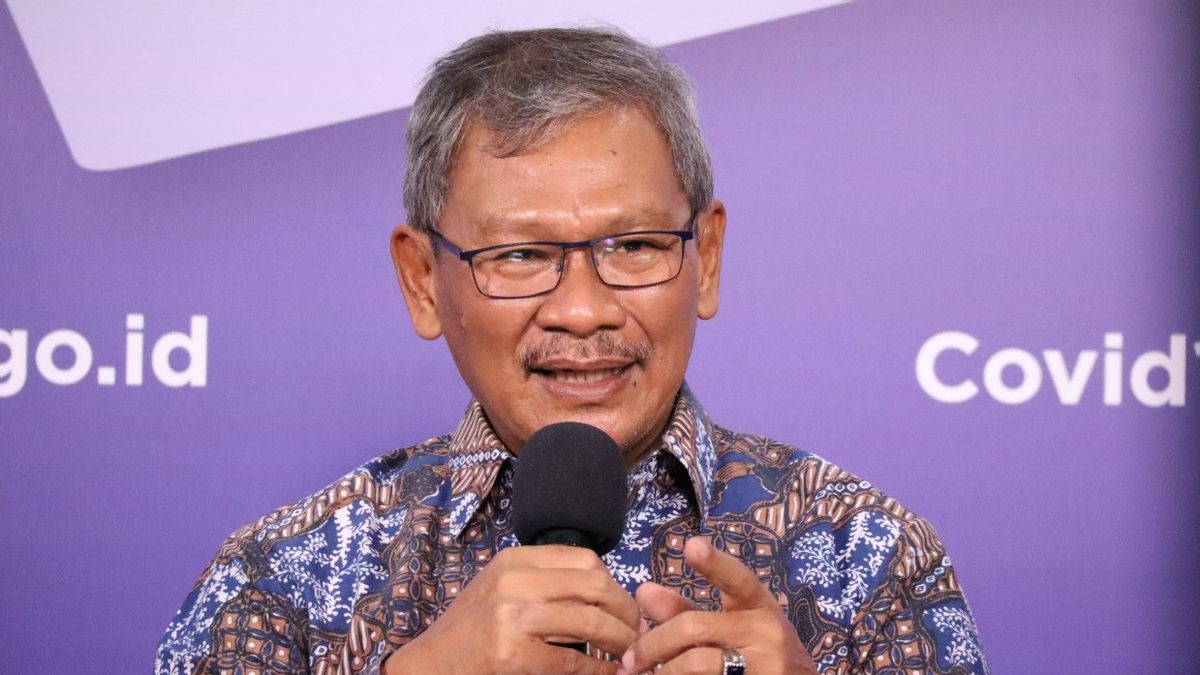JAKARTA - Government spokesman for the handling of COVID-19, Achmad Yurianto, explained the progress of the case as of Thursday, July 2 at 12.00 WIB. There were an additional 1,624 confirmed positive cases today. The total number of positive cases became 59,394 people.
The number of new cases today broke the highest record since the announcement of the first COVID-19 cases in Indonesia in early March. Previously, the record for new cases occurred on Wednesday, July 1 and Saturday, June 27 with 1,385 cases.
"The number of positive confirmed cases was obtained from the results of our aggressive tracing, coupled with the increasingly massive number of testing we are doing," said Yuri at Graha BNPB, East Jakarta, Thursday, July 2.
The province with the highest number of new cases today is East Java with 374 new cases. East Java has also become the province with the highest total accumulation of cases, namely 12,695 cases.
Then, another province with high new cases is DKI Jakarta with 190 cases and a total of 11,823 cases. Then, South Sulawesi with 165 new cases and a total of 5,279 cases, Central Java with 153 new cases and 4,159 total cases, and South Kalimantan reporting 114 new cases and 3,337 total cases.
Of the 34 provinces that reported, 18 provinces reported new cases under 10. Of these provinces, 6 of them reported that today there were no new cases added.
"Provinces that report no new cases are Aceh, Bangka Belitung, Jambi, West Kalimantan, North Kalimantan and Central Sulawesi," he said.
Then, the number of patients who died today increased by 53 people, bringing it to 2,987 patients. There were an additional 1,072 patients recovered, bringing the total to 26,667 patients.
If you look at the distribution of data on recovered cases, a number of provinces reported higher recovery rates than new cases. Banten Province today reported that only 8 were confirmed positive but 222 people recovered.
Then, East Kalimantan, 6 new cases but 14 recovered, Riau has only 1 new case, but 10 cases recovered. North Kalimantan has no new cases and 6 cases recovered.
"Brother, this picture shows that cases of recovery will continue to increase from time to time," said Yuri.
Furthermore, the total number of specimens that had been examined was accumulatively as many as 849,155. In detail, 828,242 specimens were examined using real time polymerase chain reaction (RT-PCR) and 20,913 specimens were examined using molecular rapid test (TCM).
This examination was carried out in 144 active RT-PCR laboratories, 110 TCM laboratories, and 274 network laboratories. The rate of positive cases was 11.8 percent of all examinations carried out.
Then, the patient data under surveillance (PDP) which is currently still under surveillance reached 13,359 people. Meanwhile, people under monitoring (ODP) who are currently still being monitored reach 40,778.
Yuri explained, based on the results of the task force analysis, there was no significant increase in the number of hospital occupancy rates even though the number of new cases every day was still high.
"We can still maintain the national average occupancy rate of around 55.5 percent. This means that only half of the capacity is used," he said.
Some of the confirmed positive cases were cases that had no indication for hospitalization or people without symptoms (OTG) and had mild symptoms. Thus, they are advised to isolate independently.
"This is important for us to pay attention to, that the addition of so many cases does not always mean the increase in the number of patients who have to be hospitalized," he added.
Positive cases are not always interpreted in hospital careThe addition of positive cases today is the largest compared to before. However, said Yuri, part of the number of positive cases was not a category of patients who had to be hospitalized.
So, they mostly do self-isolation and still apply health protocols well.
"Most of the cases that have confirmed positive are cases that have no indication for hospitalization," Yuri said.
In addition, the addition of positive cases was also based on the results of tracing history of physical contact and massive testing.
The English, Chinese, Japanese, Arabic, and French versions are automatically generated by the AI. So there may still be inaccuracies in translating, please always see Indonesian as our main language. (system supported by DigitalSiber.id)













